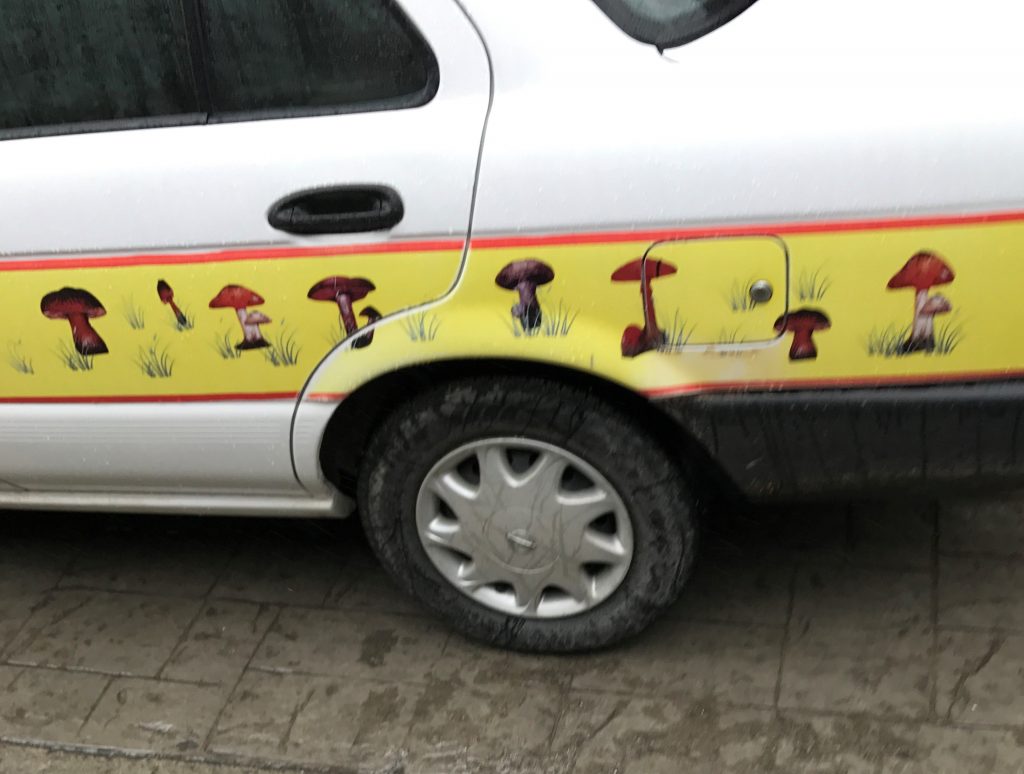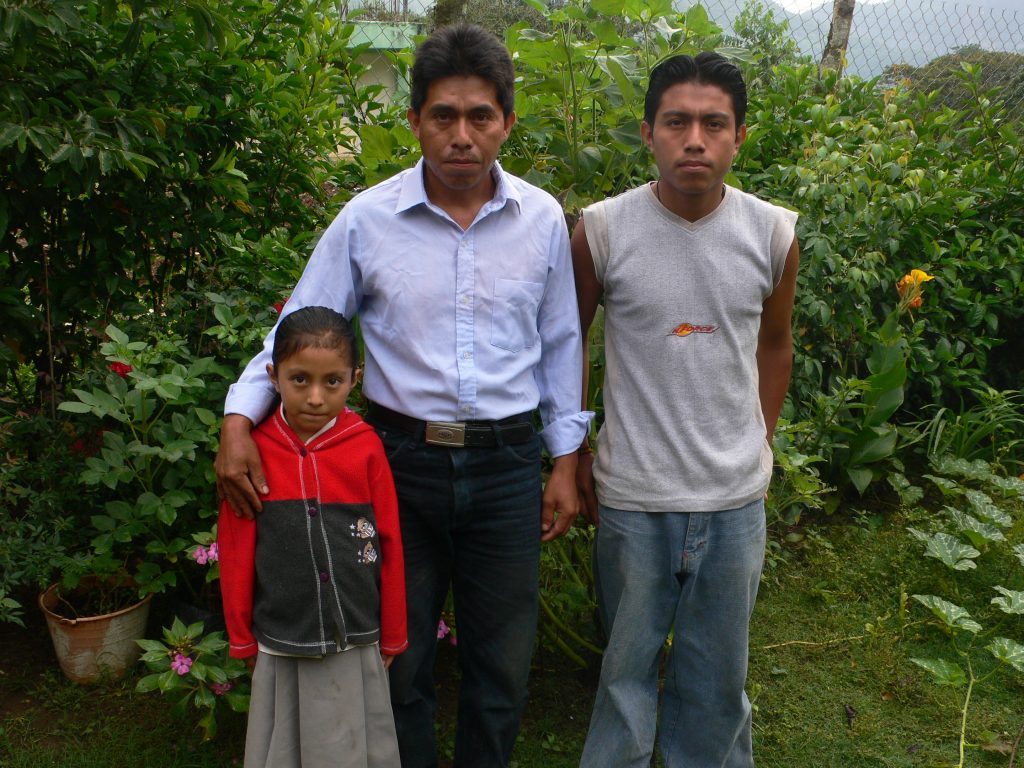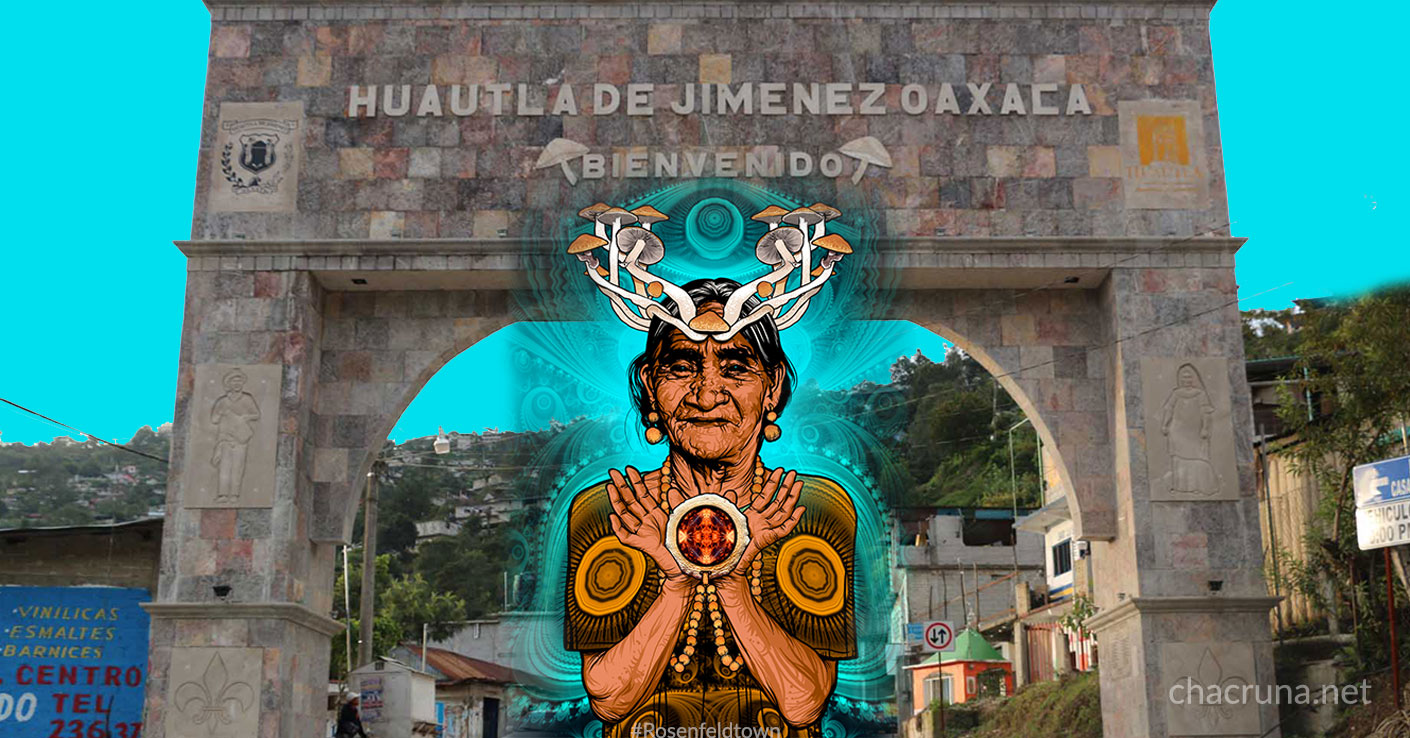- Undiscovering Huautla: City of the Magic Mushrooms - March 24, 2017
As far as the rest of the world is concerned, Huautla de Jimenez and the Sierra Mazateca were “discovered” in 1955, when the American banker and amateur “ethnomycologist” Gordon Wasson visited the town and consumed psilocybin “magic” mushrooms with the curer María Sabina. He was impressed by what he experienced and, although he had promised to keep her identity a secret, he published an account of his journey in Life Magazine.1 Since then, Huautla and its people have been inextricably linked to mushrooms; the name of the town is itself an icon for the fungi and what they represent to a national and transnational audience. When I mention, in Mexico or the United States, that I have spent much of the last 30 years in and around Huautla, I usually receive a blank stare in response; but if I do get a reaction, it is always the same: Huautla is mushrooms and the famous mushroom curer María Sabina; mushrooms and María Sabina are Huautla.
But this close association is both not entirely accurate and not fair to the inhabitants. While the psychedelic mushroom tradition is a real, living thing, it has a minor role in the everyday life of all but a few Mazatecos. They are no more the “People of the Mushrooms” than Texans are “the People of the Chicken-Fried Steak,” despite the fact that, in the last few decades, Huautecos have embraced the mushroom as a handy visual symbol of local identity and pride. They use it to decorate institutions and businesses of all sorts, from schools to pizzerias to the ubiquitous taxis that tear up and down the narrow, vertical streets.

– A typical Huautla taxi. Photo: Ben Feinberg
But, despite the vivid complexity of Mazatec life, and all of the changes that have taken place since Wasson’s visits in the 1950’s, outsider representations of the people and their practices around mushrooms and, more recently, the psychoactive plant salvia, have remained remarkably consistent. And worse, these tales of the Mushroom People fix Mazatecs in a limited role, as passive bearers of a tradition that has apparently never changed. Now that their historical function has been met, it’s time to “pass on the torch” to the more “enlightened and sophisticated” foreigners who “discovered” them.
Gordon Wasson2 started that tradition when he tried to defend María Sabina against the calumny of being “illiterate” by placing her in the time before the written word, alongside the authors of the Iliad and the Vedic Hymns. His defense set a tone: The Mazatecs were apparently outside of history, preserving a common heritage from the misty realms of our shared past because of their “isolation” until they were “discovered.” María Sabina and her people brought the mushrooms from the past, and were seen as passing this baton of knowledge forward, as a gift, to others who would take it onward.
I talked to many foreign counter-cultural pilgrims who have come to the Sierra since the 60s, and they often represented the Mazatecs the same way: as living fossils whose role was to present an exotic backdrop to their future-oriented utopian community. The Mexican rock band El Tri, in their song about María Sabina, defined this view; Maria Sabina was “a symbol of wisdom and love… who taught us the path.”3 The implication is that it is now up to “us,” not “them,” to carry on down the road.
Worse still, the idea that Mazatec shamanism is static and outside history carries the implication that all change is either “modernization,” imposed from outside, or “contamination.” The idea strips away the possibility that Mazatec religious and spiritual traditions, like all traditions everywhere, are fluid, dynamic, and engaged with local and translocal culture; and that they always have been. “No,” we tell them. “Thank you for your wonderful gift, but you have nothing more to tell us, because you have, sadly, been irrevocably ‘degraded’ by our contaminating presence.”
Mazatec mushroom use has never been outside history, and has continued to evolve, although our knowledge of most of this history is obscured by the lack of written records. But anthropologist Edward Abse4 has shown some significant change just in the last few generations. In the mid-twentieth century, Mazatec shamans sought answers to the patients’ plights in ceremonies in which only the shamans consumed mushrooms (or, if the patients joined in, it was with much smaller quantities). The answers they found tended to emphasize their patients’ accidental disruption of a cosmological equilibrium; for example, by crossing a stream associated with a particular earth spirit. Today, shamans tend to identify ailments as coming from the intentional, malevolent action of other members of the community. Many Mazatecos, likely as a result of economic and political changes, have come to have great concerns that their villages are permeated with kjoaxíntokon, a powerful Mazatec word that Abse (2007, p. 31) translates as “a hideous malevolence often concealed behind mask of friendship.” As my friend Fortunato told me as we hiked a trail from his lowland village into the Sierra Negra, “mushrooms are good to find out who your enemies are.”

– Fortunato and his family. Photo: Ben Feinberg
Today, many Mazatecos also embrace more individualistic approaches to curing. When I first started investigating this subject in 1993, I repeatedly heard a very concrete, “official” set of “rules” for taking mushrooms (always indoors, at night, and always with a curer). But when people told me their own individual stories, they often broke these rules. I talked to Lupe, who took mushrooms by herself, as an adult woman with no experience, to figure out how to bring back a husband who had abandoned her (it worked: it was his sisters’ witchcraft). And I talked with Enrique, whose wife ingested salvia every four days for two months until she was suddenly cured of the madness of post-partum depression. And Juana, who used mushrooms, alone, to fix an injured leg. And Alex, who took them just for fun. And Ines, who leads ceremonies for outsiders and locals, and who has evolved a very customer-centered model, but whose mentor was not a Mazatec curer passing on ancient knowledge, but her godfather, the urban psychiatrist Salvador Roquet. She recounts with reverence how the wise doctor from Veracruz pressed her hands and urged her to sing when she was a little girl watching the mushroom ceremonies he would conduct outside Huautla with 15 or 20 urban patients. Her knowledge comes both from her shaman uncle and this outsider, but she sees no contradiction. She is happy to draw inspiration from any available source; local, or not.

-Rosalia, a Mazatec curer and the niece of Maria Sabina, with a photo of her famous aunt. Photo: Ben Feinberg

-Ines Cortes, reminiscing about her childhood encounters with John Lennon. Photo: Ben Feinberg
The current renaissance in the scientific understanding of psychedelic substances has an opportunity to break with the false image of Mazatecos as belonging only to the past and recognize the value of Mazatec knowledge, but that seems unlikely. While scientific discourse may pay lip service to the idea of “cultural context”—especially in regards to indigenous customs—they rarely turn that concept seriously on themselves. Instead, we see a contrast between local experiences bound within a static context, and Western experiences represented as universal discoveries about medicine.
In fact, the very representation of psychedelic practices as “plant medicine” erases people from the equation. While Mazatec curers could tell you, if in different ways at different times, that the ceremonial ingestion of the “child saints” is medicinal, they would be invoking a view of curing that goes beyond the fungus and the individual brain and body, but involves, at a fundamental level, other people.
And it is this insight about the essentially social nature of health and disease that I find most alluring in Mazatec mushroom curing, and that can be obscured by sciencifying narratives about the “effects” that mushrooms have on (Western) individuals. In an era that has been characterized by the “Americanization of mental illness,” and the imposition of culturally specific diagnoses such as anorexia and PTSD in contexts where they don’t fit local understandings, research into psychedelic curing has the potential of further naturalizing culturally specific assumptions (Watters, 2011).
I remember the first time I met a scientific researcher in Huautla, in 1994. He had conducted experiments with mushrooms with volunteer subjects in Europe, in laboratory conditions, but had come all the way to Mexico to try them for himself for the first time. I spoke with him over coffee in my comadre’s (co-godparent) kitchen, as he purchased a bag of the child saints, and then the next day, after he had consumed them alone in his hotel room. I asked why he chose to do that: why he had come so far to have his experience by himself, instead of seeking a local intermediary. He replied that he wanted to be “in this place,” but felt that he had nothing to gain from talking to anyone (he couldn’t speak Spanish anyway); he wanted to experience everything “in my own brain.” And then he was gone, like a flash, back on the bus to Mexico City. This story illustrates a particular outsider approach that demands: “Give me ‘the place’ and the credibility it stores, somehow, from the hundreds of years of history. But don’t let the people be anything other than a postcard to look at; they can’t have anything relevant to say.”
So, here’s a suggestion: let’s “undiscover” Mazatec curers and campesinos by engaging with them instead; and not just as iconic reminders of an ancient past that is no longer relevant, and not as stereotypical wise elders or superstitious dupes, but as people whose perspectives sometimes make sense, and may actually drive us to challenge the cultural frameworks that unconsciously frame our own understandings. Let’s get out of the locked hotel room, and out of the idea that curing, and everything that goes along with it, only happens “in our own brains.”
References
- Wasson, R. G. (1957, June 10). Seeking the magic mushroom. Life Magazine. ↩
- Wasson, R. G. (1981). Retrospective Essay. In A. Estrada (Ed.), Maria Sabina: Her Life and Chants (pp. 13–22), Santa Barbara, CA, Ross-Erikson Press. ↩
- Feinberg, B. (2009). A symbol of wisdom and love? Contesting María Sabina: Counter-cultural tourism in Huautla, Oaxaca. In M. Baud and A. Ypiej, (Eds.), Cultural tourism in Latin America: The politics of space and imagery (pp. 94–114). Amsterdam: Brill. ↩
- Watters, E. (2011) Crazy like us: The globalization of the American psyche. New York City, NY: Free Press ↩
Take a minute to browse our stock:
Did you enjoy reading this article?
Please support Chacruna's work by donating to us. We are an independent organization and we offer free education and advocacy for psychedelic plant medicines. We are a team of dedicated volunteers!
Can you help Chacruna advance cultural understanding around these substances?
Become a Chacruna Member
To make a direct donation click the button below:
Wednesday, June 9th, 2021 from 12-1:30pm PST
REGISTER FOR THIS EVENT HERE
There is growing enthusiasm in Jewish communities about possible ancient use and modern applications of plant medicine in Jewish spiritual development. Psychedelic Judaism introduce new potential modes of healing...
















